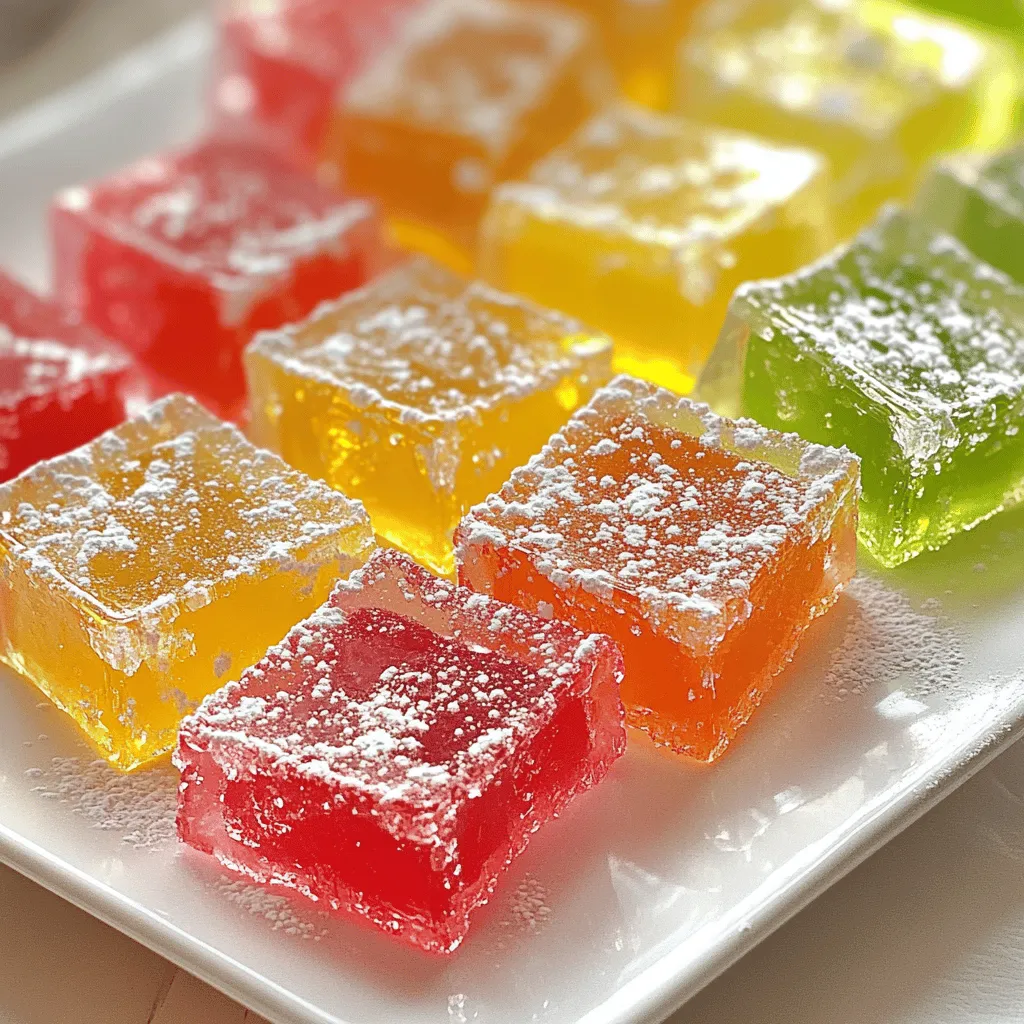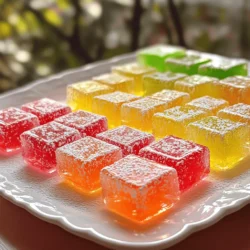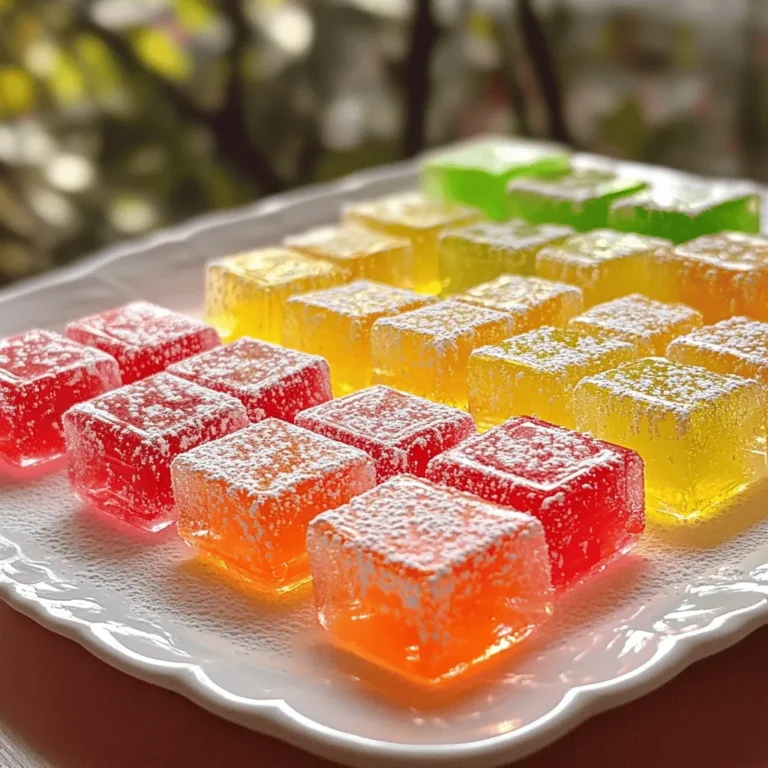Are you tired of hard candies packed with corn syrup? You’re not alone! In my latest post, I’ll share a simple and tasty recipe for making hard candy without corn syrup. You’ll learn about essential ingredients, step-by-step instructions, and even tips to customize your candy. Ready to impress your friends and family with delicious, homemade sweets? Let’s get started!
Ingredients
List of Essential Ingredients
To make hard candy without corn syrup, gather these key ingredients:
– 2 cups granulated sugar
– 1/2 cup filtered water
– 1/4 teaspoon cream of tartar
– 1 teaspoon flavored extract (like peppermint, lemon, or cherry)
– Food coloring (optional)
– Powdered sugar for dusting
These simple ingredients create a sweet treat that brings joy and nostalgia. Each one plays a role in making the candy smooth and tasty.
Alternative Sweeteners and Flavorings
You can try different sweeteners in place of granulated sugar. For example, honey or agave syrup can work, but they may change the texture. If you want a low-sugar option, consider using stevia or erythritol. Both provide sweetness without the calories.
Flavoring is another area to explore. Besides classic flavors, use extracts like vanilla, almond, or even unique ones like coconut or orange. Experiment with combinations to find your favorite mix.
Optional Add-ins for Customization
To make your hard candy unique, think about adding some fun extras. You can mix in:
– Crushed nuts for a crunchy texture
– Dried fruit bits for a fruity twist
– Edible glitter for a sparkling finish
These add-ins can elevate your candy and make it more special. Just remember to keep the proportions balanced. Too many extras might affect the candy’s texture.
Step-by-Step Instructions
Preparation of the Sugar Mixture
Start by gathering your ingredients. You need:
– 2 cups granulated sugar
– 1/2 cup filtered water
– 1/4 teaspoon cream of tartar
– 1 teaspoon flavored extract
– Food coloring (optional)
– Powdered sugar for dusting
In a medium saucepan, mix the granulated sugar, filtered water, and cream of tartar. Stir gently until the sugar fully dissolves. This step helps to create a smooth candy syrup.
Boiling the Candy to Perfect Hardness
Next, place the saucepan over medium-high heat. Allow the mixture to come to a boil. Do not stir once it boils. You want a clear syrup. Keep an eye on the syrup’s temperature. Use a candy thermometer to check it. You need it to reach 300°F (150°C). This process takes about 10-15 minutes.
Shaping the Hard Candy
Once the syrup reaches the right temperature, remove the saucepan from the heat. Let the bubbles settle down. Stir in your chosen flavored extract and food coloring if you want. Pour the hot syrup onto a greased marble slab or a parchment-lined baking sheet.
Let it cool slightly, about 5-10 minutes. When it’s cool enough to handle, use buttered hands to stretch and pull the candy into long ropes. Be careful of the heat! Cut the ropes into bite-sized pieces using kitchen scissors or a sharp knife. Finally, dust the candy pieces with powdered sugar to stop them from sticking. Let them cool completely.
Tips & Tricks
Preventing Crystallization
To make hard candy, you want a smooth texture. Crystallization can ruin your candy. Use cream of tartar in your mix. It helps keep the sugar from forming crystals. Stir the sugar mixture gently until it dissolves. Once it boils, do not stir again. This keeps the syrup clear and shiny.
Optimal Cooking Temperatures
The right temperature is key for hard candy. You need to reach the hard crack stage. This is about 300°F (150°C). Use a candy thermometer for accuracy. Cooking it too low will lead to soft candy. Cooking too high can burn it. Keep an eye on the thermometer as you boil.
How to Choose Flavor Extracts
Flavor extracts can change your candy’s taste. Choose high-quality extracts for the best flavor. Popular choices include peppermint, lemon, and cherry. Start with one teaspoon for a strong flavor. Feel free to mix flavors for fun combinations. Just remember, a little goes a long way!

Variations
Different Flavor Combinations
You can play with flavors when making hard candy. Try classic flavors like peppermint or lemon. You can also explore unique ones like lavender or coconut. Use one teaspoon of the flavor extract in your recipe. This simple swap can change the whole taste of your candy. If you want to mix flavors, go for it! Cherry and lime make a fun combo.
Colorful Candy Options
Adding color makes your candy pop! Use food coloring to create bright hues. Just a few drops can change clear candy into a rainbow treat. Mix colors or layer them for a fun effect. You can even create swirls. Use a toothpick to swirl different colors together. Get creative with your color choices for fun treats.
Seasonal Themes for Hard Candies
Make your candy fit the season! For Halloween, try orange and black colors with pumpkin spice flavor. At Christmas, make red and green candies flavored with peppermint. For spring, pastel colors with floral flavors like rose are lovely. You can even shape your candy to match the holiday. Use cookie cutters for fun shapes. This adds a personal touch to your treats.
Storage Info
Best Practices for Storing Hard Candy
To keep your hard candy fresh, store it in an airtight container. Use a glass jar or a plastic bin with a tight lid. Make sure the candy is completely cool before putting it away. This prevents moisture from forming inside the container. Avoid warm areas, as heat can melt the candy and ruin its shape.
How to Keep Candy Fresh
Keep your hard candy in a cool, dry place. A pantry or a cupboard works well. If you live in a humid area, consider using a desiccant packet to absorb moisture. Do not store hard candy in the fridge, as this can cause it to become sticky.
Signs of Spoilage
Hard candy can last a long time, but it can spoil. If you see any sugar crystals forming on the surface, it may be time to toss it. Also, if you notice any unusual smells or changes in color, it’s best to discard it. Always trust your senses when it comes to food safety.
FAQs
Can I use other types of sugar?
Yes, you can use other sugars. Brown sugar gives a caramel taste. You can also try coconut sugar for a unique flavor. Just keep in mind that each sugar can change the candy’s texture. Granulated sugar works best for a clear and hard candy.
What is the purpose of cream of tartar?
Cream of tartar helps to keep sugar from forming crystals. This keeps your candy smooth and clear. It acts like a stabilizer during cooking. Without it, your candy may turn out grainy. It’s a small but mighty ingredient in this recipe.
How do I troubleshoot failed hard candy?
If your candy is too soft, it may not have reached the right temperature. Use a candy thermometer to check. If it crystallizes, try adding a bit of water and reheat it gently. You can also try reworking the candy by melting it again. This is a great way to save your batch.
In this blog post, we explored the key ingredients and steps to create hard candy. You learned about essential components, alternative sweeteners, and how to customize your candy with add-ins. We covered tips for preventing crystallization and perfect cooking temperatures. Lastly, we discussed fun flavor combinations and best practices for candy storage.
Making hard candy is rewarding. You can try new flavors and colors for every season. Enjoy your candy-making journey and share your creations with others!


